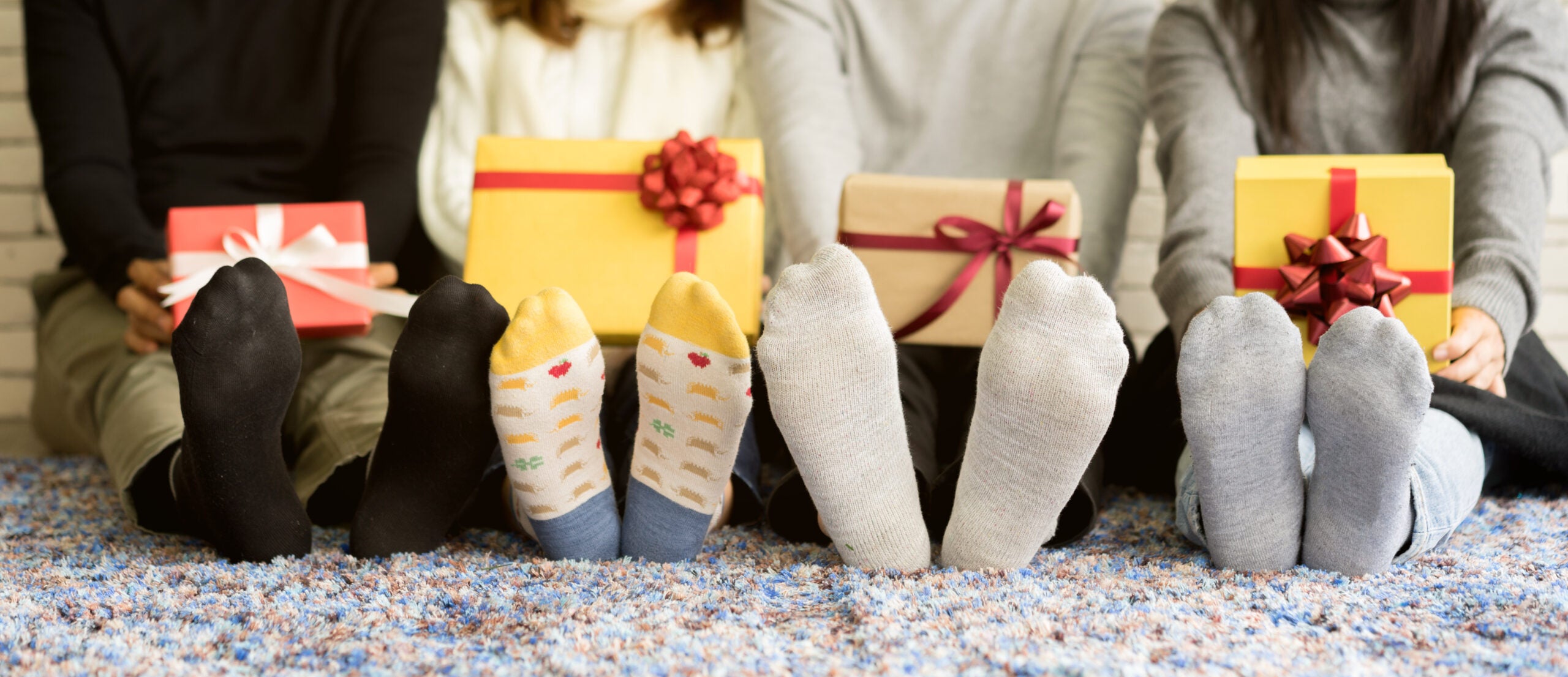
Socks may seem like a small accessory, but they can be a profitable niche market for clothing stores and manufacturers. With the right approach, you can appeal to customers looking for the best socks that cater to various needs. To carve out this niche, it’s essential to understand what different types of customers value in their socks and offer products that meet those criteria. Here’s a breakdown of what makes the best ones for athletic, leisure, and formal wear, along with the top brands and price ranges that can guide your product line.
Athletic: Performance and Endurance for Active Customers
What Customers Look For: Athletic socks are a must for active customers who need high-performance gear. To make a mark in this segment, they should offer support, durability, and moisture-wicking properties that enhance comfort during exercise. This category caters to athletes, fitness enthusiasts, and anyone who needs the best socks for an active lifestyle.
Key Features to Include:
- Cushioning: Offer extra padding in key areas like the heel and toe to protect against impact.
- Breathability: Mesh panels and moisture-wicking fabric help keep feet cool and dry during workouts.
- Compression: A snug fit can support the arch and reduce foot fatigue, making these ideal for runners or gym-goers.
- Durability: Reinforced heels and toes that extend their life, especially important for high-intensity activities.
Brands to Study:
- Nike Dri-FIT: Known for high-quality athletic socks with moisture-wicking technology. Their price point ($10–$18 per pair) is accessible for most fitness enthusiasts.
- Balega Hidden Comfort: Popular among runners, these ($13–$18 per pair) offer comfort, breathability, and durability, making them a staple for athletic retailers.
- Under Armour Performance HeatGear: These ($10–$20 per pair) combine compression and breathability, making them a great addition to any athletic line.
Leisure Socks: Everyday Comfort for Casual Wear
What Customers Look For: Leisure socks are all about comfort, versatility, and style. Your customers want ones that they can wear every day, whether they’re lounging at home, going out for casual outings, or running errands. These need to be soft, breathable, and stylish, but not too thick or overly technical.
Key Features to Include:
- Softness: Use materials like cotton, bamboo, or merino wool to create a luxurious feel that appeals to everyday wearers.
- Style: Offer a variety of colors and patterns that blend well with casual outfits. Socks are often a fashion statement in this segment.
- Odor Control: Anti-microbial treatments can add value to your product line by keeping them fresh for longer periods.
- Stretch: Ensure a comfortable fit that stays in place without feeling restrictive.
Brands to Study:
- Bombas: These ($12–$18 per pair) are incredibly popular due to their softness, comfort, and philanthropic model (for every pair sold, one is donated). The brand’s focus on comfort and social impact resonates with a wide customer base.
- Smartwool Everyday: Known for their merino wool blend, these ($20–$25 per pair) are highly breathable and moisture-wicking, making them ideal for customers who value natural materials.
- Happy Socks: With their bold designs and comfortable cotton fabric, Happys ($12–$20 per pair) have turned socks into a fun, fashionable accessory. Their style-first approach is great for capturing a trend-conscious audience.
Price Range You Can Target:
- Budget: $5–$10 per pair (entry-level for casual customers).
- Mid-Range: $10–$18 per pair (for customers looking for comfort and style).
- Premium: $18+ per pair (targeting customers who prioritize eco-friendly or luxurious materials).
Formal Socks: Elegance and Comfort for Professional Wear
What Customers Look For: For formal wear, men want socks that are both stylish and comfortable enough to wear all day. Formal socks should be lightweight, durable, and available in subtle patterns or solid colors to match a suit or professional attire. Offering a range of colors, designs, and premium materials will appeal to customers looking for sophistication in their socks.
Key Features to Include:
- Lightweight Fabric: Use high-quality materials like mercerized cotton, silk, or fine wool for a polished look and feel.
- Sophisticated Design: Subtle patterns like pinstripes or argyle, or solid colors in black, navy, and grey, help elevate formal attire.
- Durability: Reinforced heels and toes ensure that these socks can endure long hours of wear without losing shape or sagging.
- Breathability: Even formal socks need to be breathable to prevent discomfort after extended wear.
Brands to Study:
- Pantherella Fine Gauge Socks: Offering premium socks ($25–$35 per pair), Pantherella is known for its luxurious materials like Egyptian cotton or merino wool, making them a favorite in high-end markets.
- Gold Toe Metropolitan: An affordable, high-quality option ($8–$12 per pair) that delivers durability and style, perfect for more budget-conscious customers.
- Falke Dress Socks: This brand ($20–$35 per pair) combines fine fabrics with expert craftsmanship, making their socks a staple for the formalwear niche.
How to Build Your Niche Sock Market
Now that you know what makes a great sock for each category, it’s time to strategize how to offer them to your customers. Whether you’re a retailer or manufacturer, consider the following steps to capitalize on the niche sock market:
- Curate a Diverse Product Line: Offer socks for athletic, leisure, and formal occasions to attract a broad range of customers. Consider focusing on a specialty like eco-friendly materials or fun, bold designs to distinguish your brand.
- Focus on Quality: High-quality socks, especially those with reinforced stitching, moisture-wicking fabric, and stylish designs, will encourage repeat business. Socks may be small, but the right product keeps customers coming back.
- Cater to Trends: Keep an eye on market trends, such as sustainability or bold fashion patterns. Brands like Bombas and Happy Socks have successfully tapped into these trends, offering either socially conscious or fashion-forward products.
- Pricing Strategy: Offer options across a wide price range. Budget socks can appeal to everyday customers, while premium socks offer higher margins and cater to customers willing to spend more on luxury or specialized items.
- Educate Your Customers: Use packaging, displays, and online descriptions to highlight key features like moisture-wicking, odor control, or eco-friendly materials. This not only adds perceived value but can differentiate your products from generic options.
By curating the right mix of athletic, leisure, and formal socks that meet your customer’s specific needs, you can build a profitable niche market around this often-overlooked accessory. Whether you aim to capture trend-conscious customers or performance-focused athletes, there’s a sock segment waiting to be tapped.
796 Views












